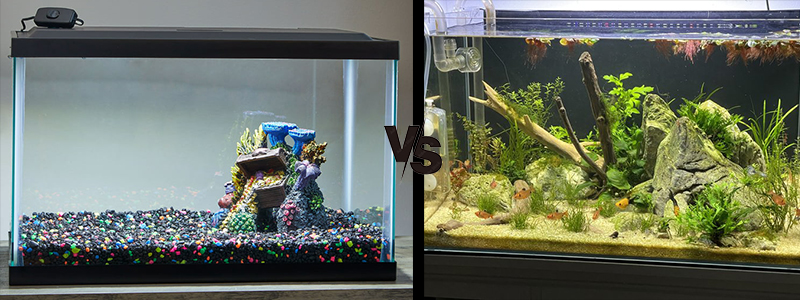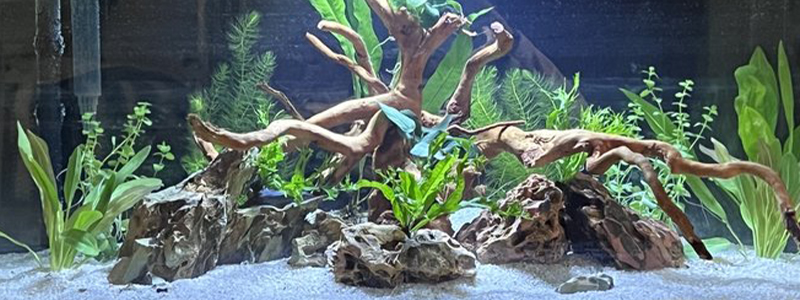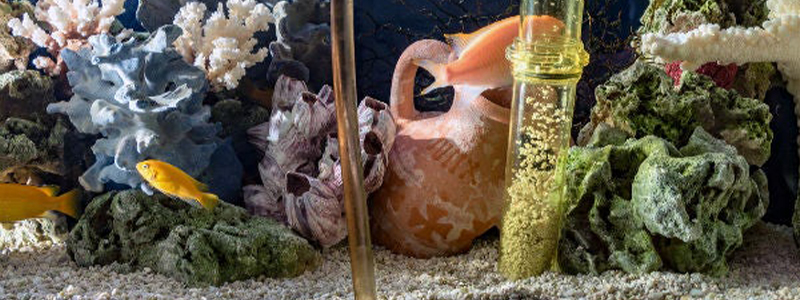Angelfish – another amazing fish option to add to your aquarium!
Undoubtedly, they bring an incredible amount of happiness to aquarium hobbyists due to their fascinating qualities. Their magnificent appearance, lively characteristics, and colorful existence can inject any fish tank with enthusiasm and liveliness.
Furthermore, they’re popular for being uncomplicated in terms of looking after them, providing food, and breeding; thus making ideal choices for beginners as well as experienced fish lovers.
As a result, this blog is going to cover different types of freshwater and saltwater Angelfish species. Also, get yourself hooked till the end because we are going to shed light on Angelfish breeding, food, and Angelfish care requirements.
Let’s get started!
Disclosure: This article contains affiliate links. When you follow a link to purchase the products, I sometimes earn a commission, at no additional cost to you. Read my full disclosure here.
What is an Angelfish?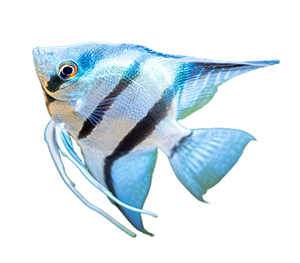
Angelfish is a member of the cichlid fish clan, and many different angelfish species can be spotted in different countries across South America and the vast Amazon River system. One thing that makes Angelfish species truly captivating is their graceful swimming motion caused by their lengthy fins that sway beautifully.
Of course, each type of Angelfish has its own distinct features, like stripes or markings that only add up to their charming appearance as a whole.
Types Of Angel Fish Species
- Veil Angelfish
Given that they have long, flowing fins that resemble delicate veils, Veil Angelfish species are incredible types of freshwater Angelfish that are renowned for their breathtaking beauty. They typically have a silver or gold body color, which is enhanced by glowing scales that reflect light from the aquarium environment. With such grace, they move through the water, and their finnage produces a stunning visual display.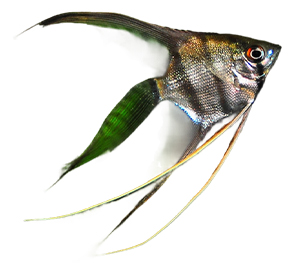
- Albino Angelfish
Due to their lack of pigmentation and nearly colorless body, albino Angelfish species have a unique and endearing appearance that gives them a translucent and pale appearance. Since they have red or pink eyes, which add to their allure, they appear ethereal overall.
These fish stand out distinctively from other fish in any home Angelfish aquarium setup despite being colorless creatures.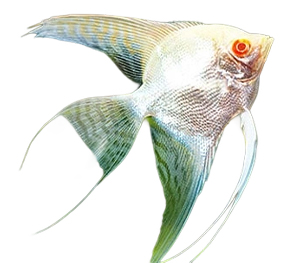
- Marble Angelfish
The Marble Angelfish species is a visually captivating fish with its unique blend of black, white, and grey markings that create an eye-catching swirling marble pattern. Each Marble Angelfish has its distinct look which makes them one-of-a-kind like a work of art. Introducing them into any aquarium will add more intrigue to the tank due to their dynamic patterns.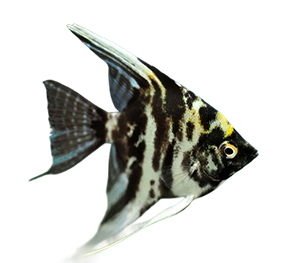
- Clown Angelfish
Meanwhile, if you prefer more vibrant colors in your aquarium then the Clown Angelfish is saltwater Angelfish species that might be perfect for you!This lively fish sports bright shades of orange or yellow combined with bold black stripes running vertically on their body giving them quite a clown-like appearance. Their playful personality adds another layer of charm making them an excellent addition to any community tank.
- Zebra Angelfish
Zebra-like in appearance, Zebra Angelfish is one of the greatest types of freshwater Angelfish that have cool black and white stripes. With the black and white switching off, the stripes are incredibly eye-catching. Plus, they’re really graceful swimmers.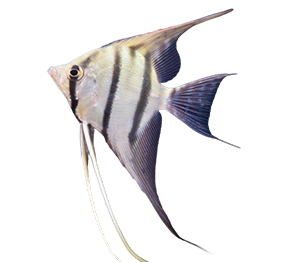
- Redcap Angelfish
Redcap angel fish species, on the other hand, keep their coloration mostly silver while sporting an awesome red cap that really stands out! It gives them quite an elegant style with some vibrant colors. Because of this, fish tank owners adore them so much.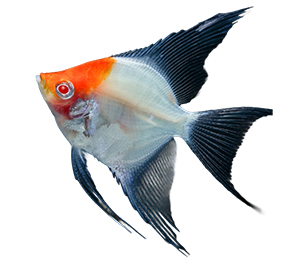
- Pearlscale Angelfish
The Pearlscale angel fish species has a one-of-a-kind texture that looks like fragile pearls due to their scales being round and dome-shaped.They come in different body hues from silver to gold, but what sets them apart is the fancy scales that give off an air of grace and sophistication. Their pearly-covered shiny look makes them attractive and enchanting no matter where you put them in an Angelfish aquarium.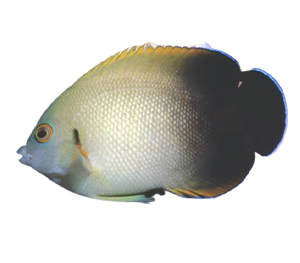
Angelfish Colors Varieties
- Silver Angelfish
You can never go wrong with types of freshwater Angelfish species, especially Silver Angelfish!It exhibits a shimmering silver body, radiating elegance and sophistication. Their graceful movements and sleek appearance make them a classic and popular choice among aquarium enthusiasts. The silver Angelfish colors varieties serve as a versatile canvas, allowing them to beautifully complement the aquatic environments.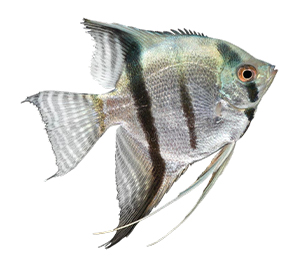
- Gold Angelfish
The dazzling Gold Angelfish showcases a captivating golden hue, reminiscent of gleaming sunrays dancing on water. Their lustrous color adds a touch of opulence and warmth to any aquarium.With their regal presence and striking visual appeal, Gold Angelfish effortlessly become the attention of the Angelfish aquarium.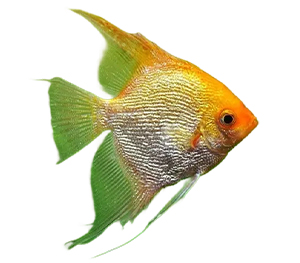
- Black Angelfish
Speaking about Angelfish color varieties, the Black Angelfish are absolutely mesmerizing with their profound, dusky hue that radiates charm and grace. When paired with lively tank mates or a flourishing environment, their jet-black bodies can create an exquisite contrast.These fish exude a charming look of elegance and mystery- no wonder they’re the perfect addition to any Angelfish aquarium seeking refinement.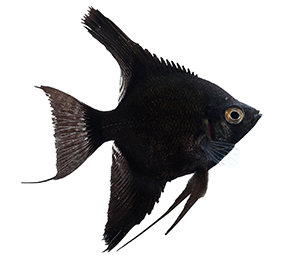
- Blushing Angelfish
Blushing Angelfish species radiate positivity through the subtle pink or orange blush on their cheeks and gill covers. This delicate touch effortlessly enhances their inherent loveliness while adding gentle charm to your aquatic habitat. Graceful yet tender-looking; having these fishes around symbolizes a pure display of affection even among sea creatures!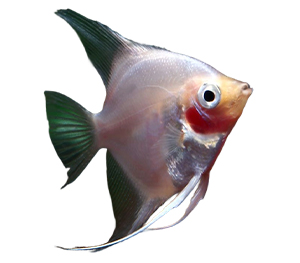
- Koi Angelfish
These Koi Angelfish have an enchanting look that reminds of koi fish, with their intricate and beautiful patterns.
Indeed, it tops the list of Angelfish color varieties owing to their vividly colored bodies within the Angelfish aquarium, putting on display shades of yellow, orange, white, and red like they had never been seen before. They create an atmosphere of peace and composure to which we can escape from our daily routines!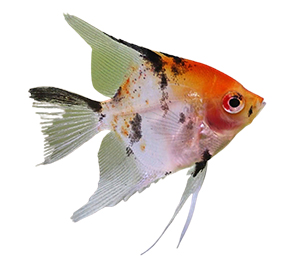
- Ghost Angelfish
Ghost Angel fish species is one of the unique types of freshwater Angelfish that come across as otherworldly creatures due to their almost see-through body.With such fascinating quality, it seems hard not to find oneself drawn into just gazing at these fishes!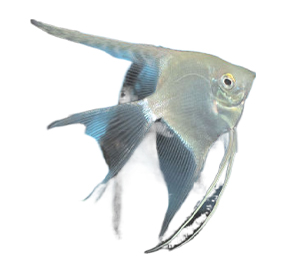
What are Angelfish Care Requirements?
Since all Angelfish species are of almost the same size, we are going to reveal the basic Angelfish tank requirements that suit the need of all the mentioned angelfish species.
- When keeping various types of freshwater Angelfish species, make sure there’s enough space for them to swim freely. It is best to have a tank size of at least 20 gallons for one Angelfish; if you plan on having multiple ones or creating a community aquarium, go bigger.
- Providing suitable water conditions is important in keeping your Angelfish happy and healthy. It’s good to maintain slightly acidic to neutral water with an ideal pH between 6 and 7.5 while also ensuring that the temperature stays warm around 75-82°F (24-28°C).
- To keep their environment clean and well-oxygenated, it is imperative always use an efficient filtration system that removes waste as per preventing toxins, which will significantly help in maintaining high-quality water standards essential for the growth of healthier angel fish species.
- Angelfish species prefer having hiding spots and visual barriers in their Angelfish aquarium, such as live plants, driftwood, or artificial structures that can provide shelter for them to spawn and hide. It’s recommended to have vertical surfaces with broad leaves when considering Angelfish tank requirements.
- For tank lighting requirements, an 8-12 hour light-dark cycle per day is sufficient enough for angel fish species; moderate lighting will do the job just fine while mimicking natural daylight cycles.
These were the general Angelfish care requirements – but you will be probably wondering, why we haven’t discussed their diets. Well, look below as we have discussed the Angelfish food essentials in detail!
Feeding Angelfish – The ideal Angelfish food!
Angelfish have a flexible appetite and enjoy different types of food. To improve their overall health, make sure they have a balanced diet. Just make sure to keep an eye on your Angelfish food during feeding time and tweak the serving size as needed. Giving them consistent, suitable meals is crucial for their health.
- Cichlid Pellets/ Flakes: Good-quality fish meal made specifically for Angelfish food is an easy-to-use source that offers necessary nutrients. Choose slow-sinking pellets to match their feeding habits.
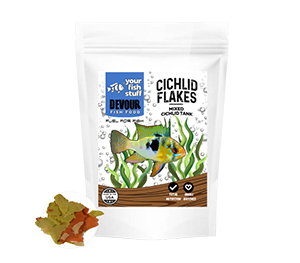
- Veggies: Mix up their menu by offering blanched or boiled vegetables like kale, green beans, or broccoli which will provide vitamins and fibers important for them.

- Plankton: Mixing things up with small plankton can give your beloved angelfish species the extra nutrition in Angelfish food boost it needs while still adding diversity to its meals.

- Thaw Frozen Food: If using frozen fish foods, ensure proper thawing before giving it as this helps in better digestion of Angelfish food.
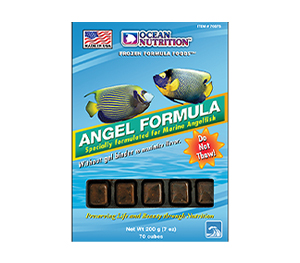
Guide to Angelfish Breeding
If you have a keen interest in Angelfish breeding, you don’t have to look for guidance anymore. Follow these steps for successful angelfish breeding.
- Compatibility: For a successful mating, it is crucial to pick non-aggressive Angelfish species that can pair up well.
- Optimal Tank Conditions: Keep your Angelfish aquarium in good shape by maintaining stable water conditions which include temperature, pH levels, and cleanliness. This will guarantee healthy egg development and facilitate Angelfish breeding.
- Separate Breeding Tank: Set up an exclusive Angelfish breeding space for the safety of eggs from predators or damage caused by other fish residing within your main setup. This is the most important Angelfish tank requirement for breeding purposes.
- Male Removal: Once fertilization happens, take out the male Angelfish species from the breeding area immediately so they don’t end up disturbing or eating vulnerable fry or eggs unknowingly
- Provide Protective Environment: To ensure the safe hatching of newbies offer vertical surfaces and areas where these creatures can lay their eggs discreetly without fear.
- Angelfish Care: Encourage parental behavior during the incubation period of Angelfish breeding by offering a stress-free environment. It results in minimal risk factors leading toward potential abandonment growth cycle.
Conclusion
Certainly, these interactive types of freshwater Angelfish and saltwater Angelfish species, add additional excitement to the Angelfish aquarium.
Thus, be ready to be captivated by the charming nature and captivating demeanor of many freshwater and saltwater Angelfish species while they transform into exceptional focal points within your aquatic realm!
Angelfish Infographic


